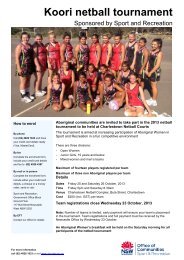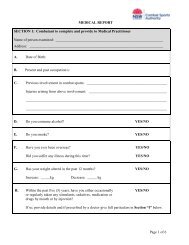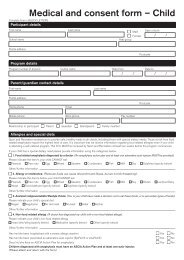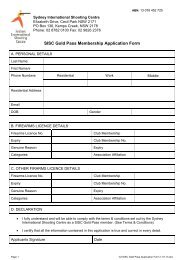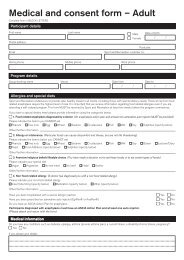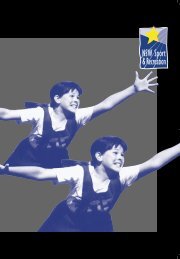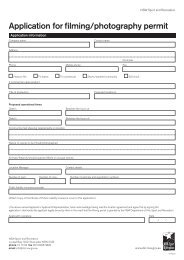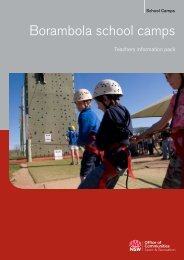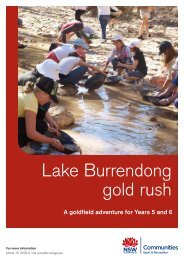Community Junior Sport Coaching final report - 2009
Community Junior Sport Coaching final report - 2009
Community Junior Sport Coaching final report - 2009
Create successful ePaper yourself
Turn your PDF publications into a flip-book with our unique Google optimized e-Paper software.
Table 3-1 A description of the behaviours used in the Video Observation<br />
Behaviour<br />
Pre-Instruction<br />
Concurrent instruction<br />
Technical Explanation<br />
Questioning<br />
Positive modelling<br />
Negative modelling<br />
Positive feedback<br />
Negative feedback<br />
General feedback<br />
Corrective feedback or specific<br />
feedback<br />
Hustle<br />
Scold<br />
Humour<br />
Management/organisation<br />
Observation<br />
Not on task / conferring with<br />
others<br />
Uncodable<br />
Definition<br />
Initial information given to player(s) preceding the desired action<br />
to be executed. It explains how to execute the skill, play, task or<br />
drill that it precedes<br />
Cues or reminders given during the execution of the skill or play.<br />
The coach rationalises through explanation of how the practices<br />
that are being undertaken would relate to the game situation<br />
either from a technical (technique) or strategically (tactical)<br />
basis: “From this situation in a game you would …”<br />
Any question to player(s) concerning strategies, techniques,<br />
assignments, etc. associated with the sport<br />
A demonstration of correct performance of a skill or playing<br />
technique<br />
A demonstration of incorrect performance of a skill or playing<br />
technique<br />
positive feedback (verbal or non-verbal) in the form of<br />
demonstrations of satisfaction or pleasure, at a skill or practice<br />
attempt: “Good”, pat on back, smile<br />
Verbal or nonverbal feedback demonstrating displeasure at the<br />
players’ skill or practice attempt of the drill, skill or play: “That’s<br />
awful”<br />
Nonspecific feedback (verbal or non-verbal)<br />
Information, re-explanation or feedback regarding the actual<br />
performance of the drill, skill or play which informs the player of<br />
how the performance should be altered in order to improve:<br />
“Get lower” OR<br />
feedback of a specific nature given to the player(s) following the<br />
execution of a specific skill or task: “The timing of that pop pass<br />
was excellent”<br />
Verbal statements intended to intensify the efforts of the<br />
player(s)<br />
Verbal or non-verbal behaviours of displeasure<br />
Verbal statements related to organizational details of practice<br />
sessions not referring to strategies or fundamentals of the sport<br />
Periods of diagnostic observation when the coach is not talking<br />
and is observing the players and analysing their execution of the<br />
skill or activity or observing the way in which a team is executing<br />
strategies in open play situations<br />
Any behaviour that cannot be seen or heard or does not fit into<br />
the above categories<br />
Adapted from the Arizona State University Observation Instrument (Lacy & Darst, 1984, pp. 59-66) and the Rugby Union<br />
Coaches Observation Instrument (Brewer & Jones, 2002, pp. 148-150)<br />
<strong>Junior</strong> <strong>Community</strong> <strong>Coaching</strong> Report December <strong>2009</strong> 25



